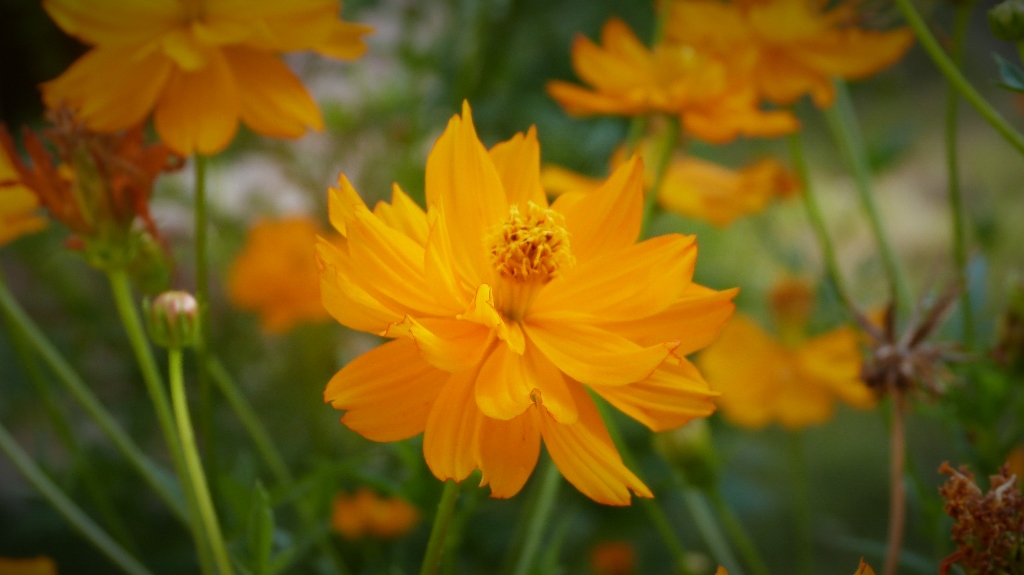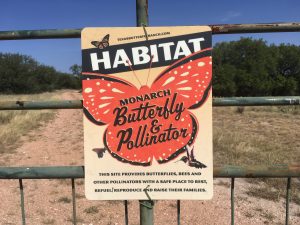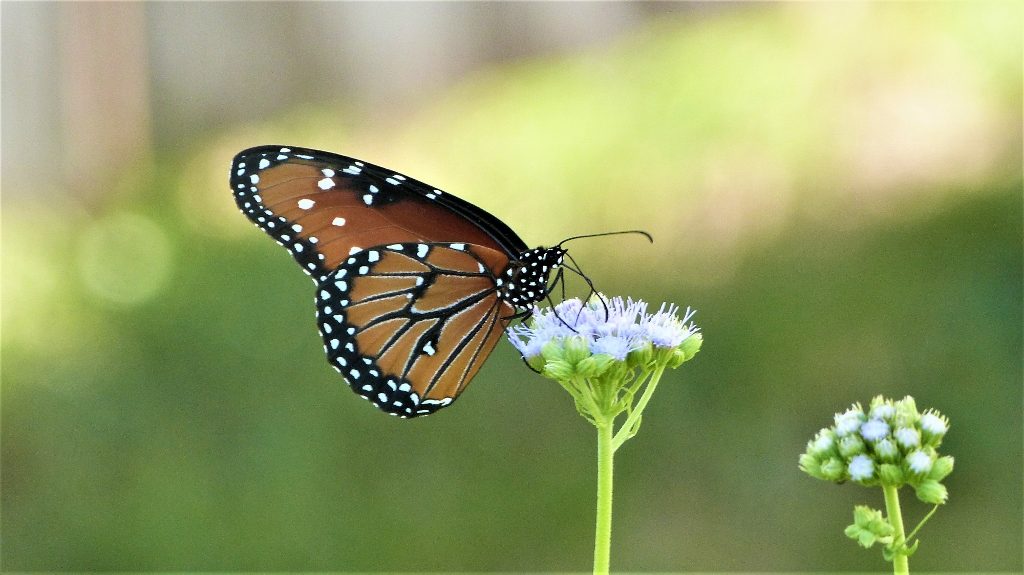Great job, San Antonio!
Our 300for300 pollinator habitat initiative continues to pick up steam, with a dozen habitats pledged in the last two weeks. Check out the beautiful photos in this post of Candy Roach’s newly installed pollinator habitat in District 6.
Roach sent us an email in late July, letting us know how her garden grows.

Cosmos in bloom. Photo by Candy Roach
“The plants are finally starting to bloom and we’re seeing mostly Queens and Swallowtails right now along with a wide variety of bees and wasps,” she wrote, adding that the addition of puddling stations are queued up as future improvements. “By next year, I hope the plants start to take off and enjoy their new home. I’ve used a lot of annual seeds to get some quick color so they are starting to take effect.”
Roach’s habitat is one of 81 committed so far in our 300for300 pollinator habitat challenge.

Hummingbird on zinnia in Candy Roach’s new District 6 pollinator habitat. Photo by Candy Roach
We’ve developed a map of the gardens that we plan to update every Friday in our quest to reach 300 by October 21, in time for our 2018 Monarch Butterfly and Pollinator Festival. The initiative is a gift to our city for its 300th birthday.
Click on the map below to see all 81 gardens across San Antonio, which are color-coded by city council district. We’re more than a fourth of the way to our goal, so please spread the word.

Yard signs available
District 1, the downtown area, leads the effort with 24 pollinator habitats. District 8 is in second place with 14 habitats, and District 2 shows eight.
San Antonio has always been known for its hospitality and the city’s embrace of pollinator habitats continues that tradition.
If you have friends or neighbors who might join us, please share this post with them and get ready to start planting when the weather cools in September. Monarchs and other pollinators will start moving through the region soon. If you’d like to purchase a pollinator habitat sign to tout your garden and help educate the community of the importance of wildlife pollinators, you can do so at our online shop.
Ready to sign up? More here on criteria for a pollinator habitat.
TOP PHOTO: Queen on Purple Mistflower. Photo by Candy Roach
Related posts:
- Pollinator habitat signs now available
- Vote! For your favorite San Antonio 300for300 pollinator habitat sign
- Planting a pollinator garden? Here’s tips on how to do it
- Cowpen Daisy plays host plant to Bordered Patch Butterfly
- Frostweed earns its name with intriguing ice sculptures at first frost
- Mostly native urban butterfly garden outperforms lawn anytime
- New study: nectar plants more important than milkweed for monarch butterfly migration
Like what you’re reading? Don’t miss a single post from the Texas Butterfly Ranch. Sign up for email delivery below, like us on Facebook, or follow us on Twitter, @monikam.



Cosmos are at the top of the list for a nectar source for monarchs and queens as well as all other pollinators. They are a brightly colored easy to grow annual and self seed so they come back every year. They thrive all over the country. They bloom profusely all summer and during the monarch migration and you will see monarchs all over them. From seed to bloom is only 45 days so if you hurry you still have plenty of time to plant a bed full of them in Texas to feed the monarchs as they migrate to Mexico.
Hi. Do you have a print out for the 300 for 300 imitation? I would like to promote at national night out of 2. I plan to plant a garden and document for presentation
Hi Donna. I’m happy to help, but I’m not quite sure what you’re asking for. If you give me some more info, I’m sure I can help out.
What a magnificent read … thanks to all contributors .
Thank s to TexasButterflyRanch for all you do!!!
AbundantBlessings
Your friend
Ginger